Transmission fluid is as important as motor oil to your car. It won’t shift or catch fire if you don’t have it. In comparison, many drivers overlook their transmission fluid. They frequently change the oil in their engine, but they seldom—or never—change their transmission fluid. If you’re here, it’s likely that you’ve been wondering what type of transmission fluid to use for your Ford F150. Should I use synthetic or Type F fluids? Transmission fluid is essential for every vehicle, as it is designed to lubricate the components of your car’s transmission in order to maximize engine performance.
Because there are so many different types on the market, selecting the best one may be difficult. Transmission fluids have a variety of grades and characteristics, depending on their grade. Depending on the kind you select, the fluid can either clean the engine, lessen early wear and tear, or prevent oxidation. The possibilities are endless. This is why it’s so crucial to choose wisely.
We can help you decide if one type is better than the other.

Ford Transmission Fluid Type

Transmission fluid lubricates the moving components in your car’s transmission to improve its performance. It also serves as a coolant and aids in the transmission’s power transfer while being an effective heat exchanger. Transmission fluid deteriorates over time, leaving the same brown color as your engine oil. The transmission fluid will degrade due to oxidation and build-up. It’ll be harder for it to keep your transmission lubricated and enable power transfer as it becomes filthy and clogged with debris. Transmission fluid replacement is a cost-effective method of keeping your systems operating at peak performance and avoiding costly repairs.
Before we continue, keep in mind that your owner’s handbook will provide you with information about which type of transmission fluid to use. Depending on the vehicle’s engine year and make, the manufacturer will provide correct engineering data for a particular sort to use on your car.
Furthermore, you want to use car parts that are recommended and trusted by your manufacturer in order to avoid any future issues, right? However, for the sake of this post, we’ll start by noting that while there are numerous transmission fluid types available, Ford cars utilize the Mercon series. Automatic Transmission Fluid, commonly known as ATF, is a type of fluid that powers the automatic transmissions in most automobiles. It’s an oil-based transmission fluid that’s recognized for working well at high temperatures and extending car engine life. Read more about how to choose the correct transmission fluid for 2005 Ford F150 here.
Mercon or Mercon V for Ford
Is it appropriate to use Mercon or Mercon V on your Ford vehicle? There are several different types of Mercon. Mercon V is more compatible with the most recent Ford vehicles, whereas Mercon is ideal for preceding models.
Mercon V is a fully synthetic automatic transmission fluid that should not be mixed with other vehicle gearbox fluids, including Mercon. Mercon V can be found in a number of different car parts, including the oil system and transmission. However, it should be noted that Ford announced the Mercon V as a replacement for the Mercon. This implies that cars that were previously fitted with Mercon ATF will need to use Mercon V instead. The latter has more chemical properties geared to ensuring greater performance and durability:
- Enhanced friction durability.
- Provide superior transmission life.
- Promote smooth gear shifting while the vehicle is in operation.
- Provide exceptional thermal protection.
- Protect the vehicle against premature transmission wear and tear
When to Change Transmission Fluid for 2005 Ford F150
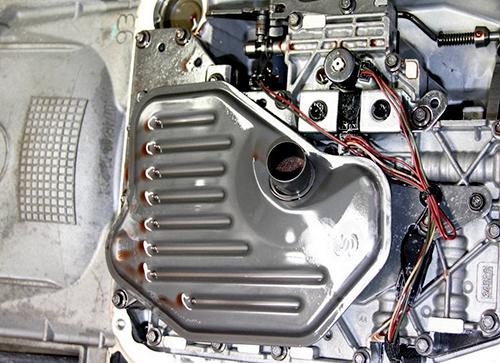
Ford is one of the most durable cars on the market, according to many critics. Even so, routine inspections on your car are suggested to ensure that everything is in working order. Transmission fluid is filthy. It might cause the transmission components to decay, as well as overheat.
Checking the transmission fluid is part of the regular service and maintenance procedure. In this situation, you’re mainly looking for indications that your car requires a transmission fluid change. In most cases, Ford recommends changing the transmission fluid on your F150 every 30,000 to 60,000 miles or once every two to four years.
It’s critical to understand that this advice is based on the average driver. If you drive long distances frequently, you’ll need to change the fluid more often. Aside from driving habits, there are a few other reasons why you may need to change the transmission fluid more frequently. You might need to replace it every 15,000 miles if the following conditions are met:
- If you reside in a region with a warm climate.
- If you plough snow frequently.
- If you tow or haul frequently.
- If you’re frequently involved in stop-and-go driving.
Signs Your Transmission Fluid Needs Changing
There are a few tell-tale signs that indicate your vehicle’s transmission fluid should be changed. Consider the following questions:
- Is your car’s automatic transmission slipping between gears?
- Is your car suddenly having problems with rough or jittery gear shifts?
- Is there a “check engine” light on the dashboard?
- Is there a significant decrease in gear shifts?
- Is it possible that your gears are not shifting at all?
If you experience any of the problems listed, it indicates that there is a problem. There are a number of factors that can cause your Ford F150 to lose power. The transmission fluid could be extremely low, or it may be dirty. However, the easiest way to tell whether your Ford F150 requires a transmission fluid change is to actually check its transmission fluid.
When and How to Check 2005 Ford F-150 Transmission Fluid

Checking transmission fluid is critical for truck drivers, especially those who do a lot of towing and hauling. Today, we’ll discuss when and how to check the transmission fluid in your F-150. You’ll know whether you need to change the transmission fluid in your Ford F-150 after reading this article.
Every 30,000-60,000 miles, it is suggested that you replace the transmission fluid in your Ford F-150. That comes out to roughly every 2-4 years, depending on where you live and how demanding your driving is. nHowever, if you live in a hot environment, plow snow frequently, tow/haul a lot, or drive at stop-and-go speeds often, you may need to change it more frequently; around every 15,000 miles. That’s a lot of miles. In total, I’ve driven about 30,000 kilometers in my life. During that time, I’ve replaced the automatic transmission fluid three times. That means it happens once a year on average for me. The only way to tell for sure is to check your transmission fluid levels on a regular basis or have them checked by a Ford-trained expert at a scheduled time.
Check the Transmission Fluid Level
The first step is to see whether you can check the fluid at all. Due to the fact that many modern cars don’t have a transmission fluid dipstick, it’s only possible for a professional to inspect it. If your automobile does have a dipstick, here are a few things to keep in mind.
- Consult your ford owner’s handbook, first and foremost. It is always sound advice to do so.
- Park your car on a completely flat surface.
- Check the transmission fluid with the engine on or off based on the owner’s handbook. Obviously, you’ll have to be much more careful if the engine is running.
- Double-check that the car is in Park and apply the parking brake for safety’s sake.
- Locate the transmission dipstick, which is usually brightly colored and positioned toward the back of the engine.
- Remove the dipstick carefully, avoiding any fluids spills or drips. Wipe the dipstick on a clean towel in the same manner as you would check engine oil.
- Remove the dipstick and verify the fluid level. Replace the stick, then remove it again to check for leaks.
- If you need to top it off, use the recommended transmission fluid. If the fluid is particularly low, you may have a leak that should be fixed.
- Replace the dipstick after you’re confident that the transmission fluid is correct.
Check the Transmission Fluid Quality
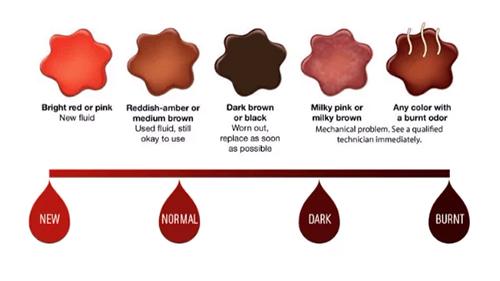
You should inspect the fluid’s quality as well. Make sure the car is on a flat surface and level. Check both the color and consistency of the fluid using the dipstick. ideally, it should be bright red or clear in certain situations. If you find that the fluid is dark red or black, it’s time to change the fluid and filter.
Rather than attempting to figure out the whole procedure yourself, take your automobile to a professional garage. While checking your transmission fluid level is definitely one of the most effective ways to do it, there are other options.
Have you ever noticed an oil stain on your parking space after getting out of your car?
If your oil is leaking, it’s possible that the transmission fluid is contaminated. But to be completely certain, perform the procedure outlined in this article rather than physically checking the level and quality of the transmission fluid.
How to Change Transmission Fluid in a F150 Guide
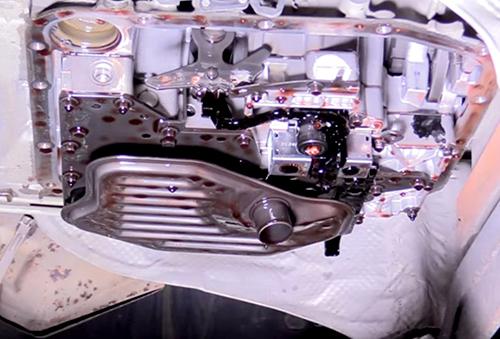
The simplest method to tell whether your transmission fluid is due for an upgrade is to check it yourself, or have a professional do it. If the fluid looks dark brown or blackened, it’s a good idea to have your transmission serviced. The color of new transmission fluid will generally be bright red, and if yours is dark brown or black, you should have it looked at.
Materials Needed
- transmission fluid
- a new transmission filter
- a ratchet
- a 10 mm socket
- a funnel
- a large pan
Remove the transmission’s bolts and remove it from the vehicle. Place your Ford F150 on car ramps and then put the gearbox in park before removing the emergency brake. To assist prevent the truck from rolling backwards, place a 4 by 4 inch wood block behind one of the back tires.
Place a drain pan beneath the transmission pan at the bottom of the automobile toward the back of the engine. There is a plug on the bottom of the transmission pan and it sits behind the engine, just below where you would find your firewall.
Remove the drain plug from the bottom of the transmission pan using a socket wrench and allow the transmission fluid to run out entirely. After that, reconnect the drain plug to the bottom of the transmission pan, then follow along with the lines that lead from the transmission to below the radiator intended.
Remove the upper transmission cooler lines from the bottom of the radiator and slide the drain pan beneath them near to the radiator, then remove the transmission coolant from below with an open end wrench. Allow the transmission fluid to run into the pan until it is completely empty. Reattach and secure the cooler lines to the radiator.
Remove the drain pan from beneath the transmission pan and replace it underneath the engine. Using a socket wrench, remove any remaining fluid from the radiator pan as you take it out. Allow any residual liquid to run into the drain pan until you’ve completely removed the radiator pan.
Remove the transmission filter from its housing with a socket wrench that is located at the base of the transmission once the transmission pan has been removed. Install a new transfer-oil filter into place and secure it to the transmission. The transmission pan should be reattached to the bottom of the engine using bolts.
Take out the transmission dipstick from the fill tube near the fire wall and insert a funnel into the top of the fill tube. When replacing the transmission fluid in a 2019 Ford F150, follow your vehicle’s owner’s handbook for the ideal quantity of transmission fluid to use. Fill the transmission with fluid and check the level by putting the dipstick back into the tube and then removing it again, checking that the transmission fluid is correct. Put the dipstick all of the way back in its tube.
Remove the back tire’s wood blocks and start the Ford F150 engine, allowing the transmission fluid to flow through the gearbox before attempting to drive the automobile. Allow it to cycle for around five minutes before backing off and shutting off the motor.
Advantages of Changing Transmission Fluid on a 2005 Ford F-150
Better fuel economy
When compared to previous fluids, new transmission fluid is more readily absorbed by the oil pump. It has improved resistance to oxidation, making it easier for old fluids to be absorbed by the engine. As a result, newer lubricants offer better fuel efficiency to the vehicle.S
Smoother shifting
Keep an eye on your car and change the oil, wash it regularly to keep the transmission in optimal form. It also aids in the prevention of costly repairs after a lengthy trip.
Reduced costs
Changing the transmission fluid is time-consuming and expensive. Synthetic gearbox fluids, which have a longer overall life and include various elements that extend its longevity, may help to minimize car upkeep expenditures.
Extended transmission life
Changing transmission fluid on a regular basis helps guarantee that your automobile is well-maintained. Simultaneously, following the routine keeps the transmission in good working order and extends its life.
Rust reduction
Transmissions can be a hassle since they must withstand corrosion and rust. Chemicals, moisture, and other factors may wreak havoc. As a consequence, it is critical to replace the transmission as needed to avoid future difficulties.


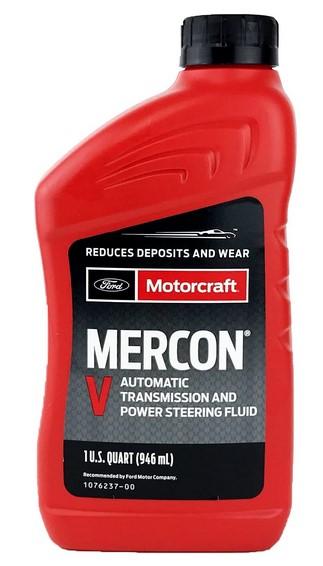
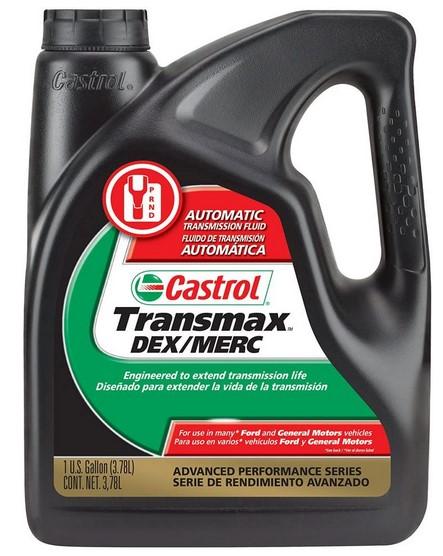



[…] are a few common issues that can cause transmission fluid to change color. These include contamination from dirt, debris, or other materials, overheating of […]